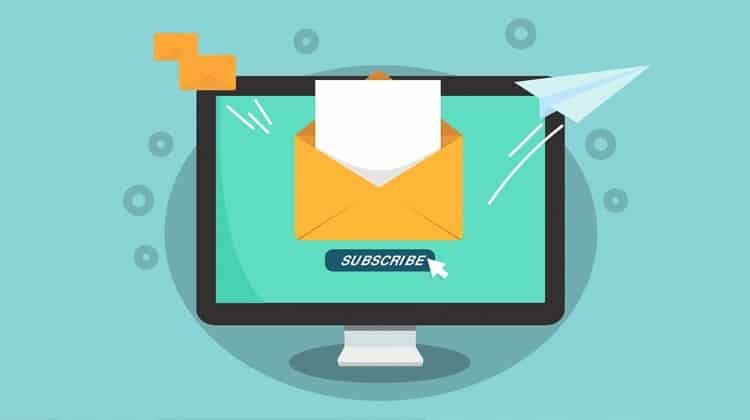by Ana Gotter • October 10, 2018
Email Marketing 101: Everything You Need To Get Started
When businesses are planning out their marketing, they want to ensure that they’re finding a marketing mix that allows them to get the most results for every penny they spend. There are a lot of different marketing platforms out there—and they all have their pros and cons—but email marketing should be at the top of the list.
Email marketing is effective, it’s relatively affordable and it can give you actionable information about your audience you can use to show them more relevant messaging. It guarantees that your message is showing up in their inbox, and they have to actually open it or delete it to get that notification to disappear.
As for how effective it is, the potential here is undeniable. Consider the following stats:
- Customers who purchase through email spend an average of 138% more than those who didn’t convert through email.
- 80% of retail professionals believe that email marketing is their biggest driver in customer retention.
- For every $1 you spend on email marketing, there’s an average return of $44.
- 72% of US adults prefer business communications come through email.
Your customers and leads are expecting to hear from you, and they’re expecting to hear from you in email. If you aren’t sure how to leverage email marketing to its fullest potential, though, keep reading—we’re going to go over everything you need to know about how to create high-performing email campaigns from scratch.
Email Content: What Should I Send?
Deciding what sort of content you want to distribute through email is an important place to start. It will affect how you ask users to subscribe, and the microcopy you’re using to inform them about what they’ll be seeing. In some cases, it may even be good to have multiple opt-in boxes so they can decide what types of emails they want to receive from you.
There are plenty of options when it comes to what information you should be sending in email. This includes:
- News about promotions, sales, and discounts. This can be store-wide or exclusive to select customers.
- News about your business, or new product announcements.
- Traditional sales emails advertising products and services.
- A newsletter with industry news, curated content, or original content written specifically for your customers.
- Updates about blog posts, potentially with links to other content you’ve written.
- Information about events that you’re hosting.
- Follow up email campaigns (which can be automated or sent manually).
- Relationship building content, which may show users new ways to use your product or check in to see how they’re doing.
Many businesses will create a variety of content for their email campaigns in order to best give customers what they’re looking for. AdEspresso, for example, distributes a newsletter of curated industry news, but also alerts customers to events like webinars or shares updates about the latest features their software offers.
A diverse approach can be best, but make sure that each email that you’re sending is serving a distinct purpose and has your audience’s needs in mind.
The Importance of Personalization
Personalization in marketing will go a long way—and that counts for email, too. The more personalized an email message is, the better the open and conversion rates will be. It’s more relevant, and it’s more valuable.
The best way to create what I call “pseudo-personalization” is by using good email marketing software like Mailchimp. These will allow you to create segmented lists and personalized messages based on factors like products they’re interested in, their relationship with your business, preferences, website click behavior and more.
You can use these criteria to create something similar to a decision tree that determines what messages they should and should not receive.
Here are a few examples of how to use this approach:
- Utilize software that suggests similar or complementary products to what users have viewed or have purchased in the past, increasing the odds of upsells or add-ons.
- Offer customers products or services that are directly relevant to them.
- Send emails based on customer relationship, like welcome emails to new leads and loyalty program emails to long-time customers.
- Distribute emails about certain products based on customer actions on previous emails sent.
Segmented email lists will get you more results long-term. If you’re looking for an example of how this is relevant, check out the email below.
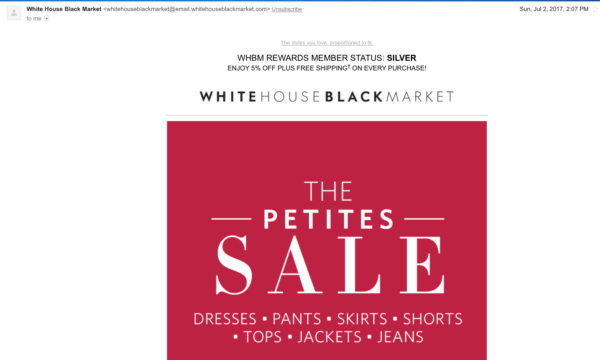
At five foot almost one (yep, I like to claim that almost) and only about a hundred and ten pounds, I’m a pretty small person. It can actually be difficult to find clothing that fits me, so when White House Black Market started sending me emails with “petite” in the subject line, I actually started opening them…and purchasing. The other clothing items they had didn’t fit me, so I’d never paid much attention before, because it wasn’t relevant to me…until it was.
Streamline Your Email Marketing with Autoresponders
In addition to sending out created-for-email-subscribers content like newsletters or product announcements, triggered autoresponders also have an important place in email marketing. They’ll help you streamline some of your important communications like welcome email series or even follow-ups and they can increase your marketing capabilities with options like abandoned cart campaigns.
Here’s how they work. A user adds a product to their cart but doesn’t convert. Twenty-four hours later, they get an email from you reminding them they forgot to purchase. Maybe there’s a discount code to entice them to do so, or sometimes the reminder is enough. They purchase (for whatever it’s worth, the average order value that comes from abandoned cart emails is 58% higher than those that come with direct sales).
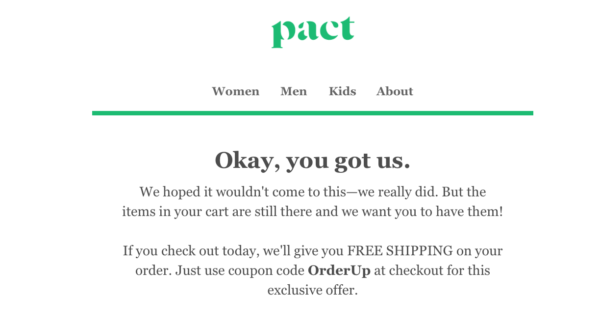
Most email marketing software platforms have triggered autoresponder campaigns that you can use to do everything from send users retargeting messages to follow up after the purchase and ask for a review.
When Should I Send Emails?
There are several things people mean when they ask, “when should I send emails?”
The first is, what time of the day or the day of the week? As it turns out, email open and reply rates are highest on the weekends, when the inbox competition is lower and customers have more time on their hands, and the best time to send the emails is in the morning or in the early evening (this may not be true for some B2B campaigns, but it holds true for most B2C businesses).
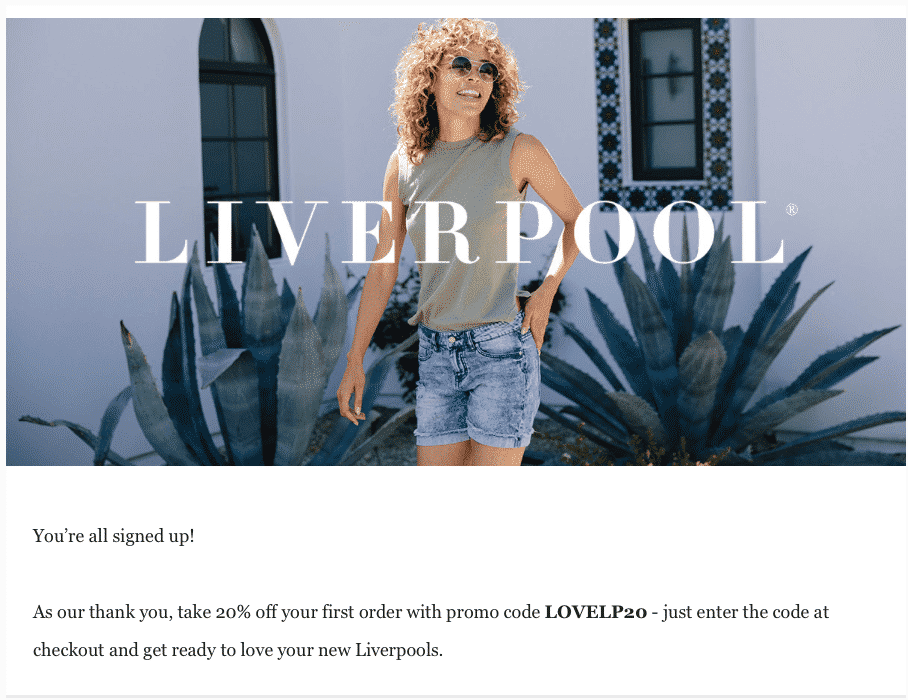
The second meaning is, how often you should send emails? This will vary based on your business model, your audience, and the types of content that you’re sending.
Some businesses are all-in on sending twice-a-day emails, but that’s how you end up with a high unsubscribe and low open rate. Instead, your best bet will be to send emails to your customers only as often as they’re relevant and valuable to your audience. For many businesses, this is around once per week, but you can test this out.
And finally, the “when” can refer to how long you should wait after certain actions are taken to send certain autoresponders. This again will vary based on your business, product and audience, but some good rules of thumb include:
- A welcome email campaign should be sent immediately after users subscribe
- Order confirmation emails should be sent immediately after purchasing and a second email should be sent after the order has been sent
- You can send an initial follow up the day users are expected to get the product with more information about how to use or care for it
- Request reviews several days-to-a week after the customer is expected to have received the product, giving them enough time to have used it, but while it’s still fresh in their memories
- Send retargeting campaigns based on site views or abandoned carts within 24 or 48 hours of the action being triggered
Email Marketing Best Tips
A lot of what we’ve covered is big picture strategy stuff, but the fine print and the details matter just as much. Here are a few small best practices that can end up making a big difference in how your messaging is received:
- The copy should be simple. People should be able to quickly scan your email and understand the point of it quickly. Even if it’s newsletter content, make sure the paragraphs are small and that the copy is digestible.
- Use clickable CTA buttons whenever possible. Having clickable CTA buttons in your emails are going to give you a huge edge. It immediate draws the eye and it makes it easy for users to click and get to where they want to go. It will absolutely increase your conversion rate.
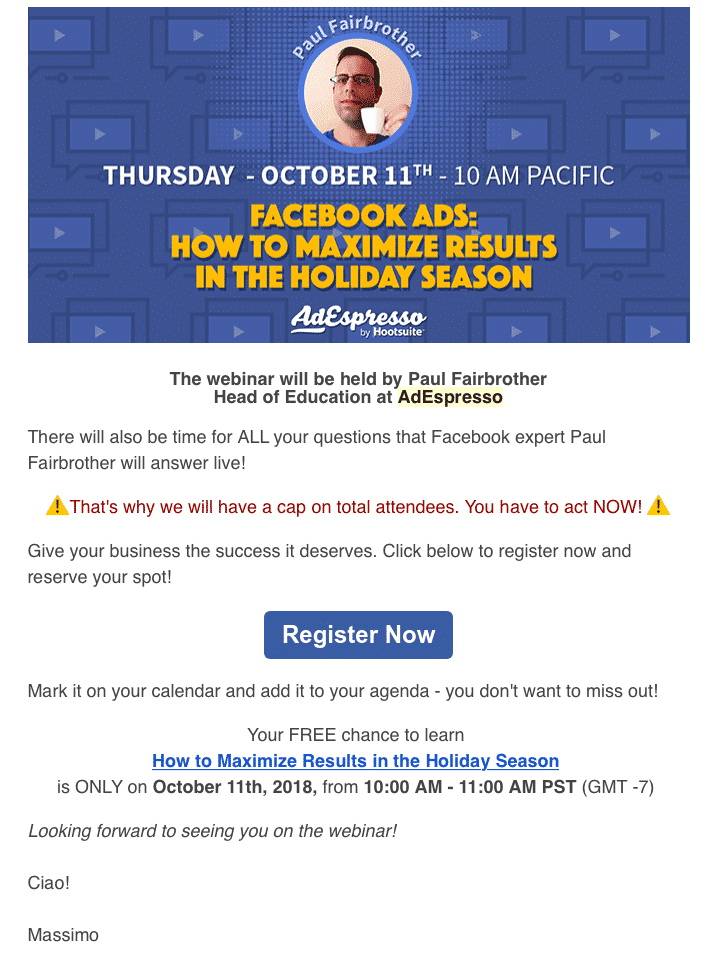
- Work aggressively to build your list. Market your email list. Mention it in your blog posts and on social media. Have an opt-in box when users are purchasing from you. Have a side-bar widget with an opt-in form and pop-ups that offer discounts in exchange for email subscriptions. Use any and all tactics that apply to your business.
- Open lines of communication. Explain to users how they can get in touch with you if you need something. This is particularly important in order emails or introductory emails.
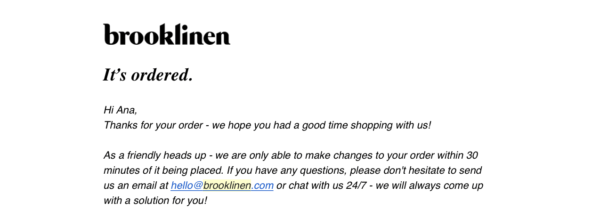
- Offer value. Your email content should be valuable to your target audience. That’s what will keep them opening those emails. Do you offer great content about how to care for the product? Great! Are you sending them discounts to save them money, or industry news you know they’ll love? Also excellent. Just keep your audience in mind here.
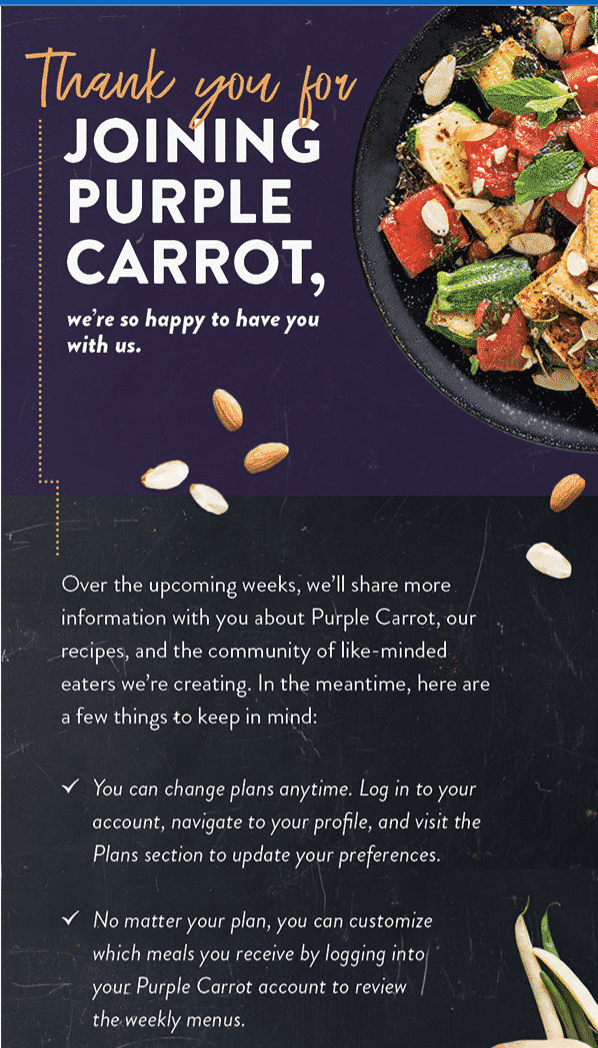
- Have strong subject lines. Your subject line can determine whether or not users open the email in the first place. You can be clever, but remember to keep it short and descriptive. If possible, explain exactly why readers should open the email by offering the value up front and adding in some urgency if possible.
Examples of Email Marketing Done Well
Want to look at a very diverse examples of email marketing done well? Let’s take a look at a few case studies.
Lodging Interactive’s Social Roundup
Lodging Interactive is an agency for hotels and resorts, and they publish a biweekly newsletter that details the changes happening in social media that affect their clients, along with information about how exactly their clients will be affected.
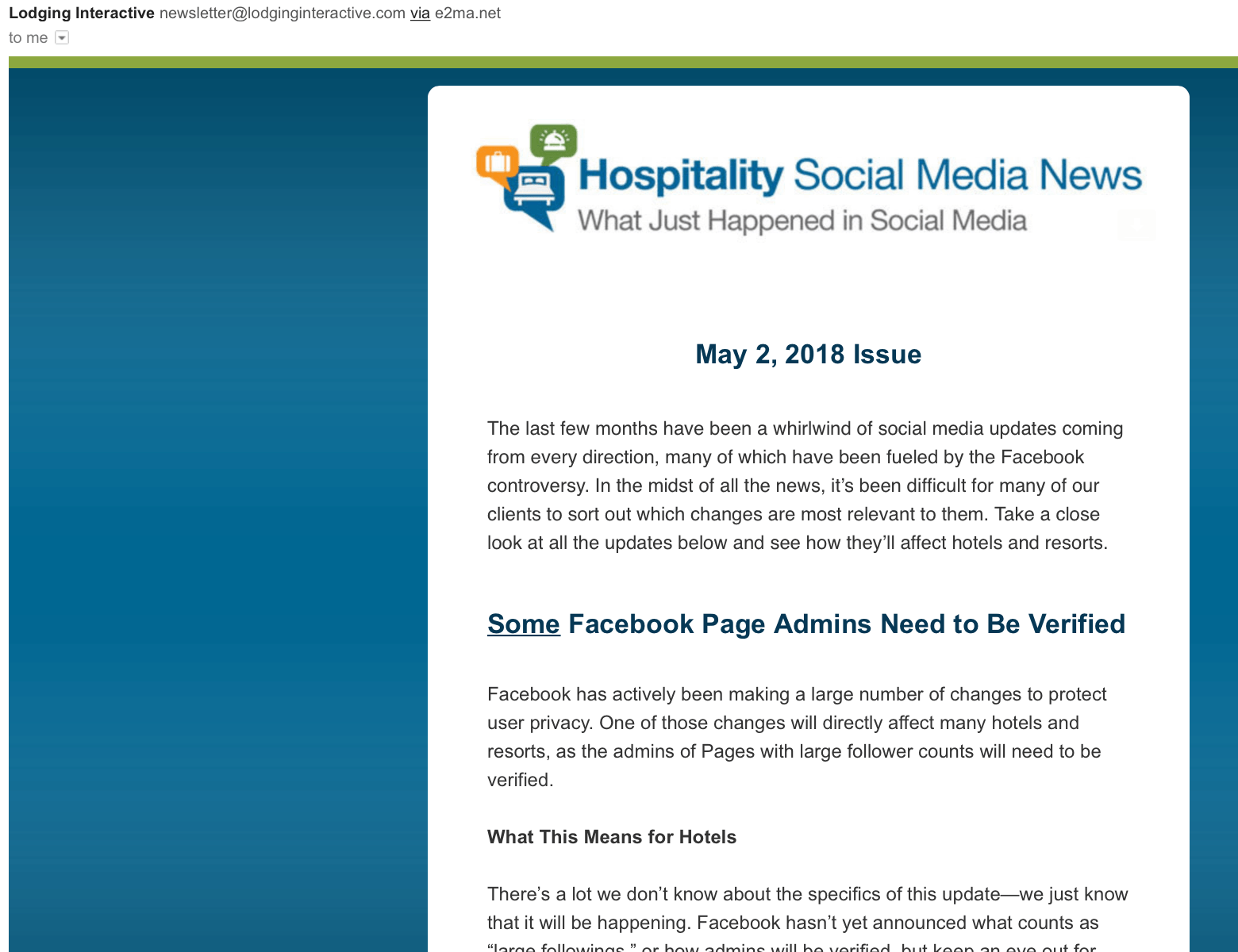
This is a great example of how to take easily accessible information and add value to it in a way that your audience will respond to. They’re quick reads, but the value ensures that their audience will keep reading those newsletters as soon as they get them.
CoSchedule’s Personalized Reengagement
A few years ago, I had a client who used CoSchedule. When the contract ended, I stopped using the tool. The CoSchedule team noticed and followed up several times through what at least seemed like a personal email directly to me from the Co-Founder (though I know this was unlikely to be the case).

They quickly and non-aggressively pleaded their cases, and also offered resources that would help me gain more value from the tool if I decided to come back. By making sure customers understand how to get the most out of your product or service, you increase its value overall—and your customer retention rates.
Williams Sonoma’s Automated Suggestions
Williams Sonoma has strong autoresponders that immediately follow up if you view a product and then don’t convert. They also go a step further, however, and include a “you may also like” section below the main email content. This features “personalized” recommendations that both upsell and cross-sell other items I may prefer instead.
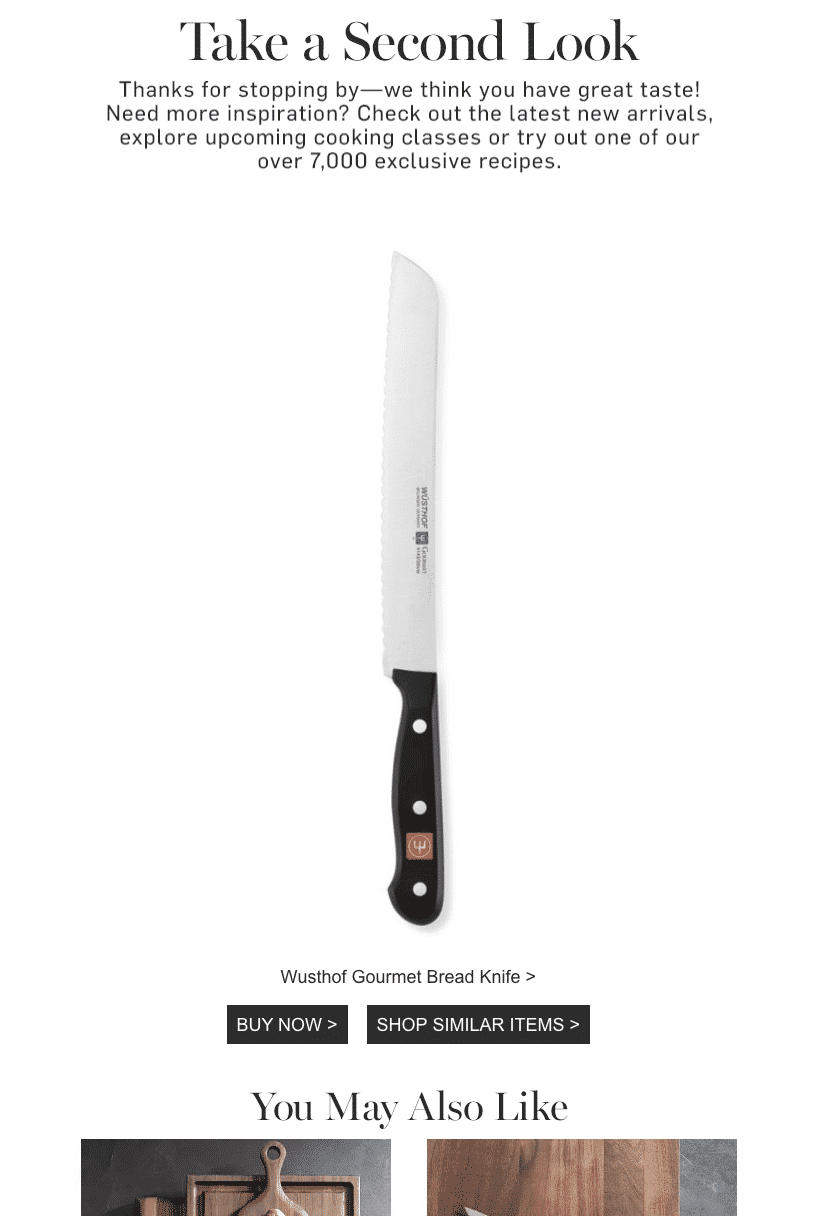
Ecco’s Use of UGC
Many businesses work exceptionally hard to accumulate reviews on Facebook, Google, Yelp and LinkedIn. But then that’s it. They let them sit there and fail to utilize them to their full potential.
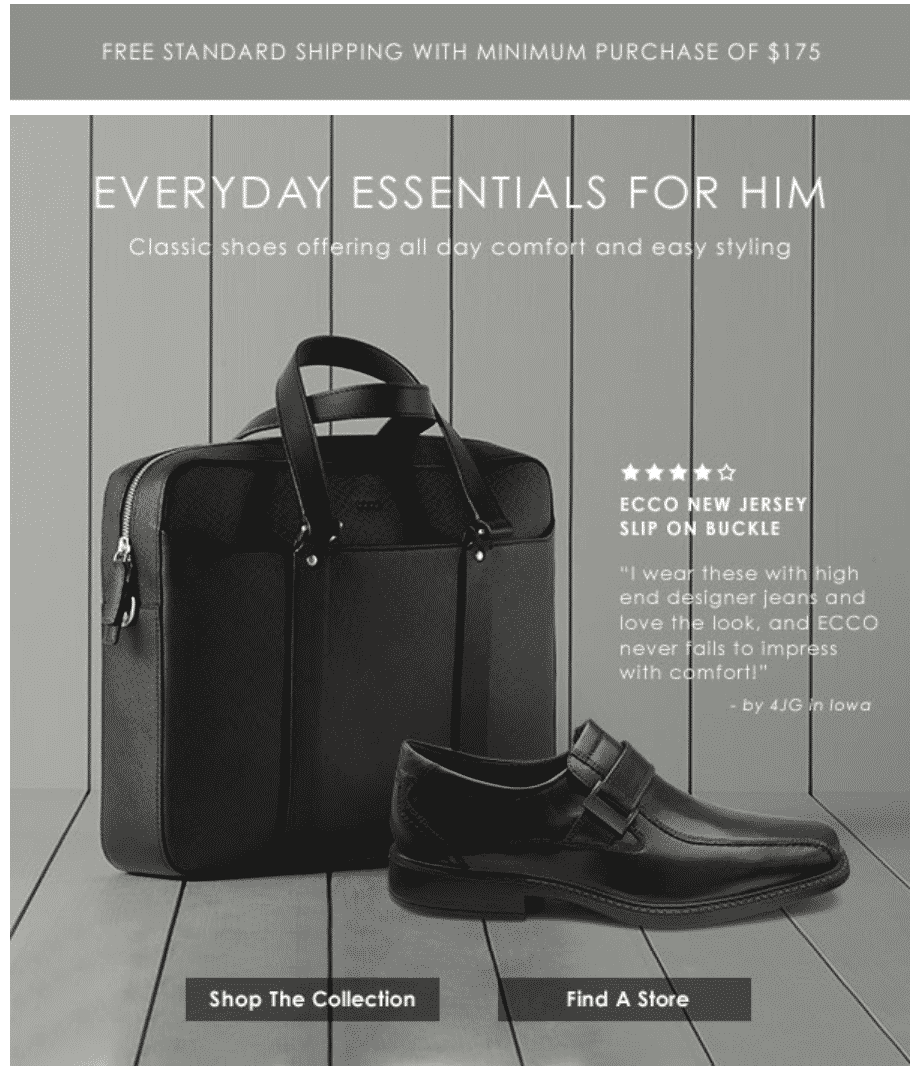
Ecco understands the value of placing customer reviews next to product images in email marketing campaigns. They show the star review rating and then place the customer review immediately underneath, both in contrasting colors that are guaranteed to grab attention. Since 71% of consumers feel more comfortable making a purchase after reading UGC, use that to your advantage.
Conclusion
Email marketing will always be an important tool that you should be using, because it grants you immediate access to a potential customer’s inbox, potentially with personalized messaging. It’s an important relationship-building tool as much as it is a direct sales tool and it can give you valuable information about what different customers care about.
Consider email marketing a central part of your marketing campaigns instead of an afterthought. Don’t wait—start writing them up now!
What do you think? Do you use email marketing for your business? Have you set up triggered autoresponders yet? How do you get the highest conversion and open rates? Share your thoughts and questions in the comments below!

